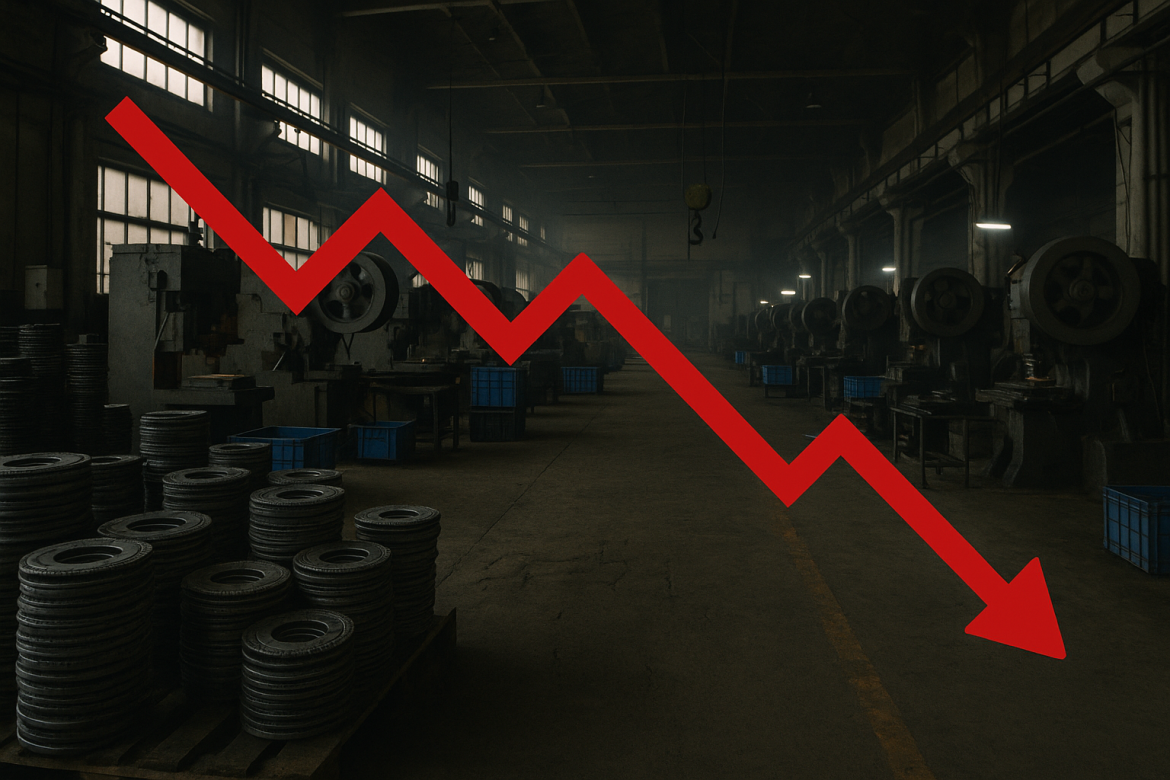China’s manufacturing sector slipped further into contraction in October, underscoring the pressure on the world’s second largest economy as weak global demand and renewed trade tensions with Washington weigh on output.
The National Bureau of Statistics reported that its official manufacturing purchasing managers’ index (PMI) fell to 49.0 from 49.8 in September.
It marked the lowest reading in six months and the sixth consecutive month below the 50 threshold that separates growth from contraction.
Factory contraction points to weak demand
The latest PMI reading missed the median forecast of 49.6, suggesting that the recovery momentum seen in the previous quarter is fading.
The sub-indices tracking production, new orders, raw material inventories and employment all declined in October, highlighting a broad loss of confidence across the industrial sector.
Weak new export orders have emerged as one of the clearest signs of stress.
Many factories had previously accelerated shipments ahead of a potential escalation in tariffs from the United States, but with fewer overseas orders in the pipeline, producers are facing tighter margins and a slowdown in capacity utilisation.
This points to a deeper manufacturing downturn that may extend into the final quarter of the year.
Services sector holds steady
In contrast, the non-manufacturing PMI, which tracks construction and services, edged up slightly to 50.1 in October from 50.0 in September.
The figure reflected modest growth in transportation, hospitality and cultural activities, boosted temporarily by China’s eight-day Golden Week holiday earlier in the month.
However, the NBS composite PMI, which combines both manufacturing and non-manufacturing activity, fell to 50.0 from 50.6 a month earlier, signalling that overall business conditions are stagnating.
The broader reading points to fragile momentum even as Beijing continues efforts to stabilise growth through targeted fiscal measures and infrastructure investment.
Growth concerns mount amid policy uncertainty
China’s economy expanded by 4.8% in the third quarter, its slowest pace in a year, raising concern that the recent stabilisation measures may not be sufficient to counter mounting external and domestic headwinds.
Fixed-asset investment contracted 0.5% in the first nine months of the year, the first decline since 2020, according to data compiled by Wind Information.
Large industrial firms, however, recorded a 21.6% increase in profits in October from a year earlier as easing price declines and state measures to control excess capacity helped shore up margins.
Despite this improvement, the overall picture remains uneven, with the protracted property downturn and weak labour market continuing to dampen consumer spending.
Trade truce offers limited relief
Adding a new layer of complexity to the outlook, China and the United States reached a temporary trade truce on Thursday after months of renewed tariff pressure.
The agreement includes a US commitment to halve the 20% tariffs on Chinese goods linked to fentanyl-related enforcement, while China will resume large-scale purchases of American agricultural products such as soybeans.
Beijing also agreed to suspend its rare earth export restrictions for a year and take further steps to curb the export of chemicals used in fentanyl production.
Both sides consented to waive port docking fees for each other’s ships over the same period.
While the deal has reduced the immediate risk of escalation, analysts have cautioned that it falls short of a comprehensive settlement on structural issues such as technology transfer and Taiwan, leaving the truce vulnerable to renewed tensions.
The post China’s factory slump deepens as export orders weaken appeared first on Invezz

